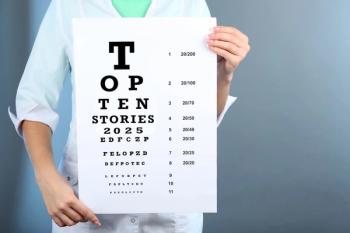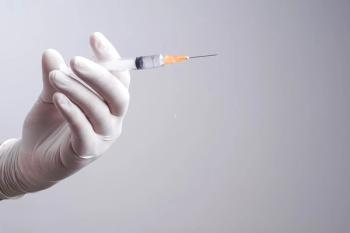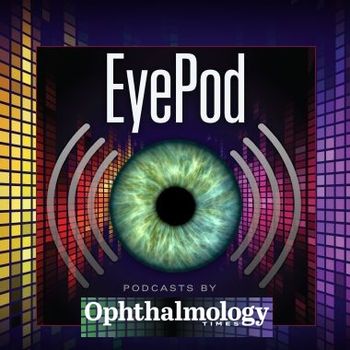
Electrophysiology's role in early detection of glaucoma
An office-based system (NOVA Testing System, Diopsys) represents an advance in electrophysiological technology that allows clinicians the ability to detect pathology they have been unable to see in the past, thereby detecting disease early.
Take home
An office-based system (NOVA Testing System, Diopsys) represents an advance in electrophysiological technology that allows clinicians the ability to detect pathology they have been unable to see in the past, thereby detecting disease early.
By Mark A. Latina, MD, Special to Ophthalmology Times
Boston-Since the conclusion of the
The only characteristics
Historically, visual evoked potentials (VEP) and electroretinography (ERG) tests have been in use in research facilities to analyze the functional integrity of the neuro-visual pathway. Though the information from these tests was always considered valuable, the nature of the testing made it impractical to integrate into everyday clinical practice.
VEP and ERG testing equipment used to be bulky, expensive, and fragile, and the extensive data generated required a neurophysiologist to decipher the results. ERG tests required sensors to be placed directly on the patient’s eye and remain there for 45 to 50 minutes, creating a long and invasive exam.
An office-based system (NOVA Testing System, Diopsys) represents an advance in electrophysiological technology that allows clinicians the ability to detect pathology they have been unable to see in the past, thereby detecting disease early.
Through sensors placed on the patient’s head, pattern VEP tracks electrical activity generated at the retina all the way to the visual cortex. The amplitude of the signal indicates the number of healthy retinal cells and the visual system’s ability to discriminate between different-sized objects. The more difficulty the patient has seeing the stimulus, the smaller the response.
The latency of the signal is the time it takes for the electrical signal to travel from the retina to the cortex. By comparing this with population averages, clinicians can detect delays in a particular individual. In essence, the longer it takes for the electrical response to be evoked, the more likely an existence of disease involving demyelination of the optic nerve sheath.
VEP supports or rules out subjective field loss, and the low-contrast stimuli can help in the documentation of damage to the optic nerve and allow the detection of early magnocellular dysfunction, which may be useful for early glaucoma detection.
Pattern ERG also detects size and speed of the electrical signal, but through the retinal ganglion cell bodies rather than the optic nerve. The magnitude of pattern ERG results decrease proportionately, more than perimetric sensitivity, detecting early states of glaucoma before the onset of visual field defects and RNFL loss.2
Diopsys has developed specialized patient-friendly ERG sensors that are placed on the lower eyelid to analyze the function of ganglion cells via two advanced protocols. The first is concentric stimulus fields. A 24° circle is projected onto the retina and a waveform is generated.
Subsequently, a 16° circle is projected and a waveform of smaller magnitude is generated. This test is sensitive to changes in the retina caused by retinal toxicity, diabetic macular edema, and age-related macular degeneration. It can be particularly useful in patients with suspected hydroxychloroquine retinal toxicity, which is difficult to detect in early stages.
The second protocol is a contrast sensitivity test that helps detect glaucoma and diabetic retinopathy. Different contrast grids project onto the macula and the resulting electrical activity produces an easy to interpret waveform.
Pattern ERG testing can be used together with VEP tests to help the clinician differentiate between retinal and optic nerve disorders, as well as improve sensitivity and specificity in diagnosing neuropathies and maculopathies when used in conjunction with other tests. It is a means of objectively detecting early-stages of disease that is completely independent of patient response, so it can clarify results of subjective functional tests and pinpoint the origin of abnormalities to the retina or optic nerve for more timely treatment.
Clinical applications
Glaucoma is most often identified by changes in a patient’s visual field test, but structural changes can also be observed via optical coherence tomography to of the optic nerve head and the RNFL.
Recent studies have shown, however, that this structural damage is preceded by damage to the retinal ganglion cells that causes them to lose their autoregulatory ability. A recent study showed that pattern ERG signals were able to anticipate an equivalent loss of RNFL as seen on OCT by a mean of 8 years.2
A separate study conducted at the New York Eye and Ear Infirmary found that the low-contrast VEP protocol was able to identify patients with structural abnormalities consistent with glaucoma, who also had normal achromatic perimetry.3 This allows clinicians to identify patients whose visual field tests are normal, but still can benefit from treatment.
As in most diseases, glaucoma treatment is most effective when started early. Detection of failing retinal ganglion cells before they are irretrievably lost could open all new possibilities for glaucoma therapy.
While the most common test for glaucoma is likely measuring IOP, clinicians also use OCT imaging, visual field tests, and other means of analysis. However, there are still patients with a normal RNFL appearance and unexplained scores on visual field examination. VEP and ERG testing provide another, completely objective, means of evaluating a patient’s neuro-visual pathway. This additional information can make the difference in diagnosis and determination of treatment.
Case study
In the example of a case study, a white male aged 53 years and suspected of having glaucoma has enlarged and asymmetric cupping. His IOP ranges from 11 to 16 mm Hg. This patient’s visual field test results show many false positive responses in the left eye. The HRT shows an increased cup, OS compared with OD with borderline RNFL. The fundus photos show greater cup to disc ratio OS, confirming the HRT. The VEP low-contrast test showed slight delay in latency OS. The Contrast Sensitivity ERG test showed slightly reduced magnitude and irregular waveform OD and the magnitude was greatly reduced OS with more irregular waveform.
Based on the delay in VEP combined with poor waveforms and magnitudes in ERG tests and information shown in HRT and visual field, aggressive treatment is recommended for OS and to lower IOP in both eyes. The patient will return for repeat pattern ERG/VEP in 1 year while on treatment.
References
1. Leske MC, Heijl A, Hussein M, et al. for the Early Manifest Glaucoma Trial Group. Factors for glaucoma progression and the effect of treatment: the early manifest glaucoma trial. Arch Ophthalmol. 2003;121:48-56.
2. Banitt MR, Ventura LM, Feuer WJ, et al. Progressive loss of retinal ganglion cell function precedes structural loss by several years in glaucoma suspects. Invest Ophthalmol Vis Sci. 2013;54:2346-2352.
3. Derr PH, et al. Evaluation of pre-perimetric glaucoma patients using short duration transient visual evoked potentials (SD-tVEP). Presented at the Association for Research in Vision and Ophthalmology annual conference. May 2014, Orlando.
Mark A. Latina, MD, is an associate clinical professor of ophthalmology at Tufts University Medical School and a surgeon in ophthalmology at Massachusetts Eye and Ear, Boston. He also has a private practice in Reading, MA. Dr. Latina can be reached via e-mail at:
Newsletter
Don’t miss out—get Ophthalmology Times updates on the latest clinical advancements and expert interviews, straight to your inbox.













































